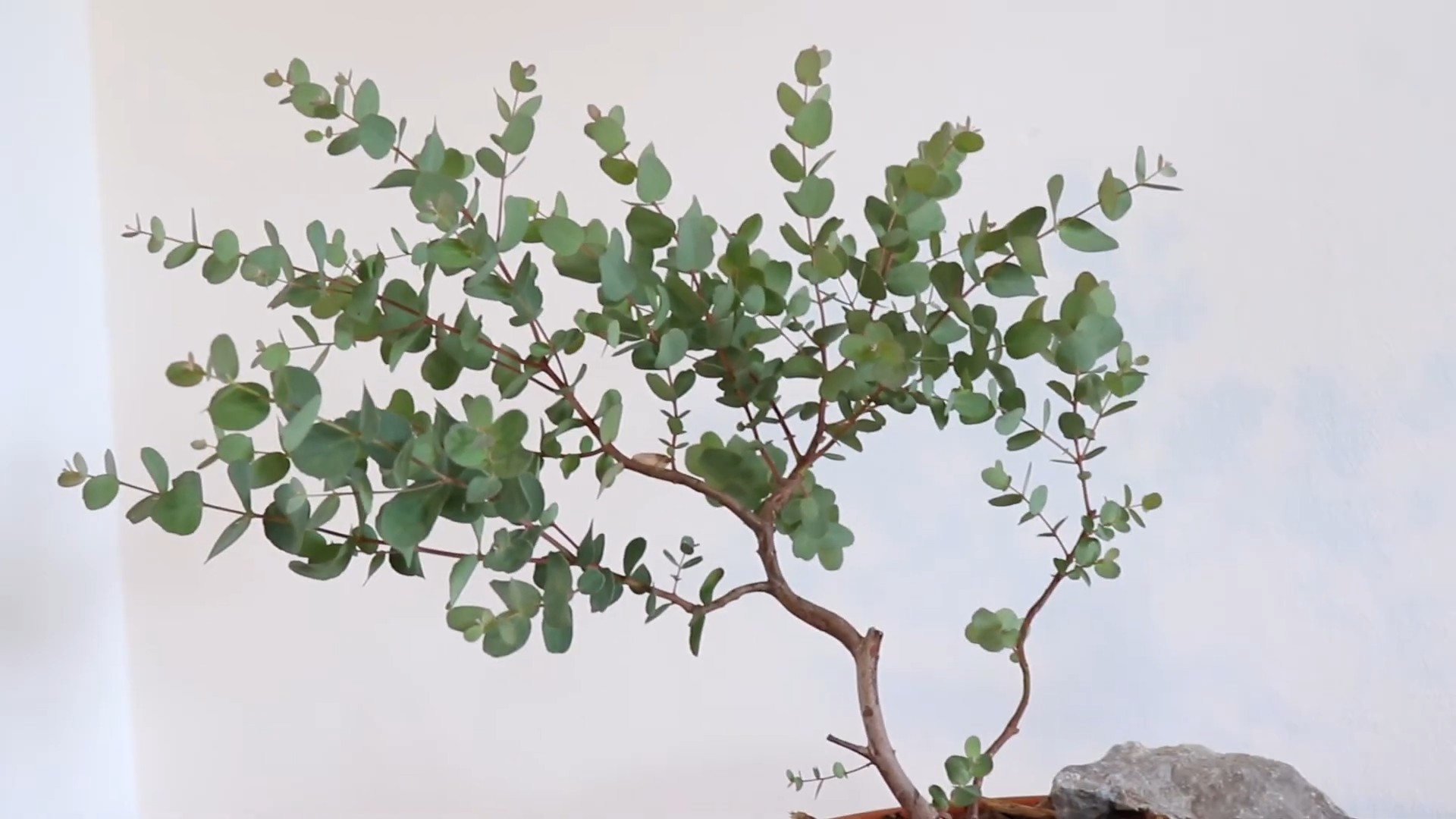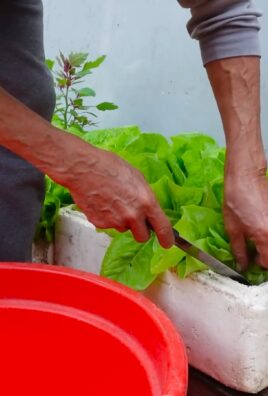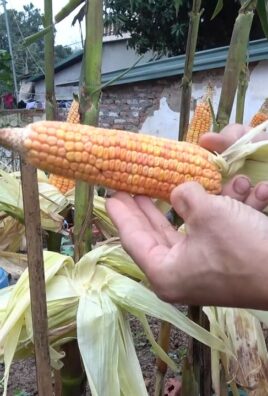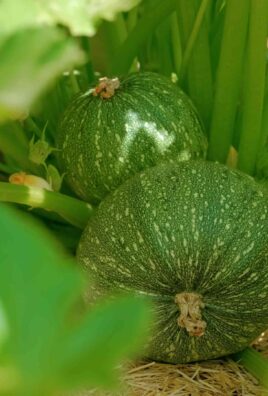Grow Eucalyptus at Home and transform your living space into a fragrant, invigorating oasis! Have you ever dreamt of waking up to the refreshing scent of eucalyptus, without having to trek through a forest? Well, dream no more! This DIY guide will unlock the secrets to successfully cultivating these aromatic trees right in your own backyard or even indoors.
Eucalyptus, native to Australia, has a rich history steeped in traditional Aboriginal medicine and is now celebrated worldwide for its medicinal properties and distinctive aroma. For centuries, its leaves have been used to relieve congestion and boost the immune system. Beyond its practical benefits, the eucalyptus tree holds a special place in Australian culture, symbolizing resilience and renewal.
But why should you learn how to grow eucalyptus at home? In today’s fast-paced world, creating a calming and natural environment is more important than ever. Imagine having a readily available source of fresh eucalyptus leaves for aromatherapy, homemade remedies, or simply to add a touch of natural beauty to your home. Plus, growing your own eucalyptus is a sustainable and rewarding way to connect with nature. This article will provide you with simple, step-by-step instructions and insider tips to ensure your eucalyptus thrives, no matter your gardening experience. Let’s get started!

Grow Your Own Eucalyptus: A DIY Guide
Hey there, fellow plant enthusiasts! Ever dreamt of having the invigorating scent of eucalyptus wafting through your home? Or maybe you’re just drawn to the striking beauty of its silvery-blue foliage? Well, guess what? You can totally grow your own eucalyptus tree, even if you don’t have acres of land! I’m going to walk you through everything you need to know, from choosing the right variety to nurturing your little sapling into a thriving tree (or a manageable shrub, depending on your space!).
Choosing Your Eucalyptus Variety
Before we dive into the nitty-gritty, let’s talk about eucalyptus varieties. Not all eucalyptus trees are created equal, especially when it comes to growing them in pots or smaller spaces. Some can grow to be absolute giants, while others are much more compact and well-suited for container gardening. Here’s a breakdown of some popular and manageable options:
* Eucalyptus gunnii (Cider Gum): This is probably the most popular choice for home growers. It’s relatively cold-hardy (down to around 10-15°F), grows at a moderate pace, and has that classic eucalyptus scent and beautiful rounded leaves when young. You can prune it to keep it at a manageable size.
* Eucalyptus nicholii (Willow-leaved Peppermint): This variety has a graceful, weeping habit and narrower leaves than E. gunnii. It’s also relatively cold-hardy and has a lovely peppermint scent.
* Eucalyptus pulverulenta (Silver-leaved Mountain Gum): Known for its stunning, almost perfectly round, silvery-blue leaves, this variety is a real showstopper. It’s a bit less cold-hardy than the others, so you might need to bring it indoors during harsh winters.
* Eucalyptus citriodora (Lemon-scented Gum): If you’re after a strong, lemony fragrance, this is the one for you! However, it’s less cold-hardy and can grow quite large, so be prepared to prune it regularly or keep it in a very large container.
Important Note: Always check the mature size and cold hardiness of the specific variety you’re considering to make sure it’s a good fit for your climate and space.
Getting Started: Seeds vs. Seedlings
You have two main options for starting your eucalyptus journey: seeds or seedlings.
* Seeds: Starting from seed is a rewarding (and often cheaper) option, but it requires a bit more patience. Eucalyptus seeds can be a bit finicky to germinate, but with the right conditions, you can definitely succeed.
* Seedlings: Buying a seedling from a nursery is the quicker and easier route. You’ll get a head start, and you’ll know exactly what variety you’re getting.
I’ll cover both methods in the instructions below.
Growing Eucalyptus from Seed: A Step-by-Step Guide
If you’re up for the challenge of starting from seed, here’s what you need to do:
1. Gather Your Supplies:
* Eucalyptus seeds (purchase from a reputable source)
* Seed starting tray or small pots
* Seed starting mix (a light, well-draining mix is essential)
* Spray bottle
* Clear plastic wrap or a humidity dome
* Warm, bright location (a sunny windowsill or under grow lights)
2. Sow the Seeds:
* Moisten the seed starting mix thoroughly. It should be damp but not soggy.
* Fill your seed starting tray or pots with the moistened mix.
* Sprinkle the eucalyptus seeds thinly over the surface of the mix. They are tiny, so don’t bury them too deep.
* Gently press the seeds into the mix.
* Lightly spray the surface with water to settle the seeds.
3. Create a Humid Environment:
* Cover the seed starting tray or pots with clear plastic wrap or a humidity dome. This will help to retain moisture and create a humid environment, which is crucial for germination.
4. Provide Warmth and Light:
* Place the seed starting tray or pots in a warm, bright location. A temperature of around 65-75°F (18-24°C) is ideal. If you don’t have a sunny windowsill, you can use grow lights.
5. Maintain Moisture:
* Check the moisture level of the seed starting mix daily. If it starts to dry out, gently spray it with water. Avoid overwatering, as this can lead to fungal problems.
6. Be Patient:
* Eucalyptus seeds can take anywhere from 14 to 30 days (or even longer) to germinate, so be patient!
7. Remove the Cover:
* Once the seedlings emerge, gradually remove the plastic wrap or humidity dome over a period of a few days. This will help them to acclimate to the lower humidity levels.
8. Thin the Seedlings:
* If you have multiple seedlings growing in the same pot, thin them out to the strongest one.
9. Transplant the Seedlings:
* Once the seedlings have developed a few sets of true leaves (the leaves that look like miniature eucalyptus leaves), they’re ready to be transplanted into larger pots.
Caring for Your Eucalyptus Seedling (or Purchased Seedling)
Whether you’ve grown your eucalyptus from seed or purchased a seedling, the care requirements are the same from this point on.
1. Choose the Right Pot:
* Select a pot that is at least 12 inches in diameter and has good drainage holes. Eucalyptus trees need plenty of room for their roots to grow. As the tree grows, you’ll need to repot it into larger containers.
2. Use a Well-Draining Potting Mix:
* Eucalyptus trees don’t like to sit in soggy soil, so use a well-draining potting mix. A mix of potting soil, perlite, and sand is a good option.
3. Planting Your Seedling:
* Gently remove the seedling from its original container.
* Loosen the roots slightly.
* Place the seedling in the center of the pot and fill in around it with potting mix.
* Water thoroughly.
4. Sunlight:
* Eucalyptus trees need plenty of sunlight, at least 6-8 hours per day. Place your pot in a sunny location. If you’re growing your eucalyptus indoors, you may need to supplement with grow lights.
5. Watering:
* Water your eucalyptus tree regularly, especially during the growing season (spring and summer). Allow the top inch of soil to dry out between waterings. Avoid overwatering, as this can lead to root rot.
6. Fertilizing:
* Fertilize your eucalyptus tree every few weeks during the growing season with a balanced fertilizer. Follow the instructions on the fertilizer label.
7. Pruning:
* Pruning is essential for keeping your eucalyptus tree at a manageable size and encouraging bushier growth. Prune in late winter or early spring, before new growth begins. You can prune back up to one-third of the tree’s growth.
* Tip: Don’t be afraid to prune! Eucalyptus trees are very resilient and can handle heavy pruning.
8. Overwintering (if necessary):
* If you live in a cold climate, you’ll need to protect your eucalyptus tree from frost. You can either bring it indoors or wrap the pot with burlap and insulate the roots with mulch.
* Important: Even if you bring your eucalyptus indoors, it will still need plenty of sunlight. Place it near a sunny window or use grow lights.
Troubleshooting Common Eucalyptus Problems
Even with the best care, you might encounter a few problems along the way. Here are some common issues and how to address them:
* Yellowing Leaves: This can be caused by overwatering, underwatering, nutrient deficiencies, or pests. Check the soil moisture, fertilize if necessary, and inspect the leaves for pests.
* Leaf Drop: This can be caused by stress, such as sudden changes in temperature or light, or by underwatering. Make sure your eucalyptus tree is getting consistent care and is protected from extreme conditions.
* Pests: Eucalyptus trees can be susceptible to pests such as aphids, spider mites, and scale. Inspect your tree regularly and treat any infestations promptly with insecticidal soap or neem oil.
* Root Rot: This is caused by overwatering and poor drainage. Make sure your pot has good drainage holes and that you’re not overwatering your eucalyptus tree. If you suspect root rot, repot the tree in fresh potting mix.
Enjoying Your Eucalyptus
Growing your own eucalyptus

Conclusion
So, there you have it! Growing eucalyptus at home, while it might seem like a task best left to professional gardeners, is surprisingly achievable with a little patience and the right approach. We’ve walked you through the essential steps, from selecting the right variety for your climate and space to nurturing your seedling into a thriving, fragrant tree.
Why is this DIY trick a must-try? Beyond the sheer satisfaction of cultivating your own plant from seed or cutting, growing eucalyptus at home offers a multitude of benefits. Imagine stepping outside your door and being greeted by the invigorating scent of eucalyptus, known for its respiratory benefits and calming properties. Think of the beautiful, silvery-blue foliage adding a touch of Australian charm to your garden or balcony. And consider the environmental impact – you’re contributing to a greener planet, one eucalyptus tree at a time.
But the real magic lies in the versatility of the eucalyptus itself. Once your tree is established, you can harvest its leaves for a variety of uses. Create your own aromatherapy blends, adding a few drops of eucalyptus essential oil (extracted from your own leaves!) to a diffuser for a refreshing and decongesting atmosphere. Use the leaves in homemade cleaning solutions for their antibacterial properties. Or simply enjoy the beauty of the foliage in floral arrangements.
Don’t be afraid to experiment with variations! If you live in a colder climate, consider growing your eucalyptus in a pot so you can bring it indoors during the winter months. Try different eucalyptus varieties to discover your favorite scent and leaf shape. Some varieties, like the Lemon Eucalyptus, offer a distinctly citrusy aroma, while others boast stunningly colorful bark.
We understand that growing eucalyptus at home can seem daunting at first, but we encourage you to take the plunge. The rewards are well worth the effort. Remember to provide your eucalyptus with plenty of sunlight, well-draining soil, and consistent watering, especially during its early stages. With a little love and attention, you’ll be enjoying the beauty and benefits of your own eucalyptus tree in no time.
Now, we want to hear from you! Have you tried growing eucalyptus at home? What challenges did you face, and what successes did you celebrate? Share your experiences, tips, and photos in the comments below. Let’s create a community of eucalyptus enthusiasts and learn from each other. Your insights could be invaluable to someone just starting their eucalyptus journey. Let’s all learn how to successfully **grow eucalyptus at home**.
Frequently Asked Questions (FAQ)
What is the best time of year to plant eucalyptus?
The best time to plant eucalyptus depends on your climate. In warmer climates with mild winters, you can plant eucalyptus in the fall or early spring. This allows the tree to establish its roots before the heat of summer arrives. In colder climates, it’s best to plant eucalyptus in the spring after the last frost. This gives the tree the entire growing season to establish itself before winter. Regardless of your climate, avoid planting during periods of extreme heat or cold.
How much sunlight does eucalyptus need?
Eucalyptus trees thrive in full sunlight, requiring at least 6-8 hours of direct sunlight per day. Insufficient sunlight can lead to leggy growth, reduced foliage density, and a weaker tree overall. When choosing a location for your eucalyptus, make sure it’s a spot that receives ample sunlight throughout the day. If you’re growing eucalyptus indoors, place it near a south-facing window or supplement with grow lights.
What type of soil is best for eucalyptus?
Eucalyptus trees prefer well-draining soil that is slightly acidic to neutral. They are not particularly picky about soil type, but they do not tolerate soggy or waterlogged conditions. Heavy clay soils should be amended with organic matter, such as compost or peat moss, to improve drainage. Sandy soils should also be amended with organic matter to improve water retention. A good general-purpose potting mix is suitable for growing eucalyptus in containers.
How often should I water my eucalyptus tree?
Watering frequency depends on several factors, including the climate, soil type, and the age of the tree. Young eucalyptus trees require more frequent watering than established trees. In general, water your eucalyptus tree deeply whenever the top inch of soil feels dry to the touch. Avoid overwatering, as this can lead to root rot. During periods of drought or extreme heat, you may need to water more frequently. Container-grown eucalyptus trees will typically require more frequent watering than those planted in the ground.
How do I prune my eucalyptus tree?
Pruning eucalyptus trees is important for maintaining their shape, promoting healthy growth, and removing dead or diseased branches. The best time to prune eucalyptus is in late winter or early spring, before new growth begins. When pruning, use sharp, clean pruning shears or loppers. Remove any dead, damaged, or crossing branches. You can also prune to shape the tree and control its size. Be careful not to remove more than one-third of the tree’s foliage at any one time.
Is eucalyptus toxic to pets?
Yes, eucalyptus is considered toxic to pets, including dogs and cats. The leaves and oil contain compounds that can cause gastrointestinal upset, drooling, weakness, and even seizures if ingested. Keep eucalyptus trees out of reach of pets, and be careful when using eucalyptus essential oil around animals. If you suspect your pet has ingested eucalyptus, contact your veterinarian immediately.
Can I grow eucalyptus indoors?
Yes, you can grow eucalyptus indoors, but it requires specific conditions to thrive. Choose a smaller eucalyptus variety that is well-suited for container growing. Provide plenty of sunlight, ideally near a south-facing window. Use a well-draining potting mix and water regularly, allowing the soil to dry slightly between waterings. Maintain good air circulation and avoid placing the tree near drafts. You may also need to provide supplemental humidity, especially during the winter months.
How do I propagate eucalyptus?
Eucalyptus can be propagated from seeds or cuttings. Seed propagation is a relatively easy method, but it can take longer to produce a mature tree. Cuttings are a faster method of propagation, but they require more attention and care. To propagate from cuttings, take 4-6 inch cuttings from new growth in the spring or summer. Remove the lower leaves and dip the cut end in rooting hormone. Plant the cutting in a well-draining potting mix and keep it moist until roots develop.
What are some common problems with eucalyptus trees?
Some common problems with eucalyptus trees include pests, diseases, and environmental stress. Pests that can affect eucalyptus include aphids, scale, and eucalyptus longhorned borer. Diseases that can affect eucalyptus include root rot, powdery mildew, and eucalyptus rust. Environmental stress, such as drought, extreme heat, or cold, can also weaken eucalyptus trees and make them more susceptible to pests and diseases. Regularly inspect your eucalyptus tree for signs of problems and take appropriate action to address them.
How can I harvest eucalyptus leaves for essential oil?
While extracting essential oil at home requires specialized equipment, you can still harvest eucalyptus leaves for other uses. The best time to harvest leaves is in the morning, after the dew has dried. Choose healthy, mature leaves that are free from pests and diseases. Cut the leaves from the tree using sharp pruning shears. You can use the fresh leaves in aromatherapy blends, cleaning solutions, or floral arrangements. To dry the leaves for later use, hang them upside down in a cool, dry place until they are completely dry. Store the dried leaves in an airtight container. Remember that homemade extracts will not be as potent as commercially produced essential oils.





Leave a Comment